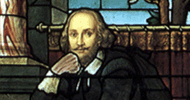

 |
 |
| Authorship | The Playhouse in Printing House | Publishers, Printers, and the Printed Book | ||||||||||||
| The Playhouse in Printing House | |||
| Theater Attributions on Title Pages | ||
|
When the Blackfriars was named on the title page to Ben Jonson's Cynthia's Revels in 1601, it marked the first time a commercial theater had appeared on a play title page-nearly twenty-five years after London's first commercial theater, The Theatre, had opened. After Cynthia's Revels, theaters began to turn up on title pages with greater frequency over the next two decades, but by 1620 only about one in four printed plays from the professional stage was sold with a theater attribution. From the 1620s through the 1640s, though, theater attributions increased significantly, so that by the 1640s, well over half of all title pages named a commercial theater. Publishers, therefore, did not feel the need to distance plays from their theatrical origins in order to make them more "literary"; instead publishers used the plays' theatricality as they turned them into literature. Thomas Lord Cromwell (1613; originally published in 1602) shows an earlier method of marketing a play's theatrical auspices. It names the company that performed the play, the Lord Chamberlain's Men, but does not locate that company within a specific London theater. The title page to Eastward Hoe (1605), on the other hand, specifies where it was performed: "As It was playd in the Black-friers." This is one of the earliest title pages to contain a commercial theater attribution; before 1605 only two others had done so. Not all theaters were alike in seventeenth-century London. Authors and audiences routinely divided them into two types, indoor hall theaters and outdoor amphitheaters, types with real differences between them. Indoor theaters held about one-third as many playgoers as outdoor amphitheaters did, and the admission prices at indoor theaters were more expensive (their cheapest admission was 6d., whereas admission cost as little as 1d. at outdoor theaters). Indoor hall theaters were originally called "private playhouses" because the first theaters of this kind in the 1570s and 1580s were supposedly not open to the public. They housed children's companies whose managers would charge a fee, or so the theory went, to watch the children "rehearse" their music and plays for future performances at court. Because the children were not technically performing before a public audience-only practicing for future court performances-their theaters were called "private." By 1600, the companies playing at indoor theaters were full commercial enterprises, but indoor theaters continued to be called "private" playhouses. The King's Men performed Massinger's The Roman Actor (1629), for example, but its title page still calls the Blackfriars a "private Play-house." Later critics adopted the terms "private" and "public" to distinguish between the authors, audiences, and companies of indoor and outdoor theaters. "Private" indoor theaters were thought to cater to elite tastes, while "public" outdoor theaters were considered the havens of a more popular clientele. Recent research, however, has shown that both types of theaters attracted similar heterogeneous audiences, and that the so-called division between "private" and "public" theaters was more a polemical construction than an accurate description of the two types of theaters. Play title pages offer suggestive evidence in support of this view. The title page of Henry Shirley's The Martyred Soldier (1638) shows that publishers did not necessarily see a distinction between "private" and "public" theaters. The play is described as having been played "at the Private house in Drury lane [i.e. the Phoenix/Cockpit, an indoor theater], and at other publicke Theaters"-an attribution that uses both terms to describe a single playhouse. As this title page makes clear, "private" playhouses were also "publicke" theaters-just as outdoor theaters were-suggesting that, in the early modern period at least, "private" and "public" were not mutually exclusive terms for playhouses. Thomas Middleton and William Rowley's The Changeling was not published
until 1653-eleven years after Parliament had officially shut down the professional
stage in London. But its title page still advertises the play as having been
performed at the Phoenix in Drury Lane and at Salisbury Court, suggesting that
even after closing of the theaters, publishers saw theater attributions as an
effective way to advertise their plays. |
Images: Columbia
Rare Book & Manuscript Library
Technology: Columbia Center for New
Media Teaching & Learning